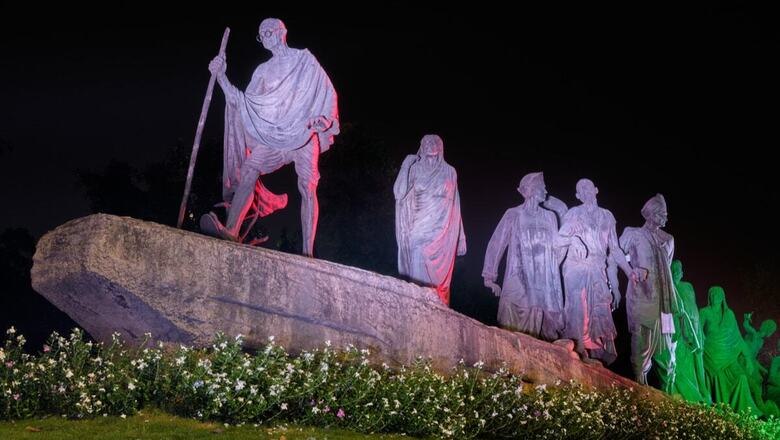
views
Dandi March or Dandi Satyagrah was a non-violent protest against the British monopoly on salt production that was initiated by Mahatma Gandhi on March 12, 1930.
He led the historical Dandi March from Sabarmati Ashram in Gujarat’s Ahmedabad to the village of Dandi in the state’s coastal area. It took him 24 days to reach Dandi.
Gandhi Ji started the movement with 78 volunteers and was later joined by thousands of others on his way. The movement played a significant role in the Civil Disobedience Movement against the salt laws.
Here are the things that you must know about this historic movement that created a stir against the British Colonial rule in India.
1. The Dandi March was started on March 12 and ended after 24 days on April 6, 1930. It passed through 4 districts and 48 villages from Gandhi Ji’s Sabarmati Ashram to Dandi.
2 The march was conducted by Mahatma Gandhi to oppose the salt law introduced by British rule. Under this salt law, Indians were restricted from producing or selling salt. British not only exercised monopoly over the manufacture of salt, but also imposed a heavy salt tax. However, Gandhi Ji broke the law by producing the salt at Dandi seashore followed by several other Indians.
3. The march was joined by thousands of people and drew the world’s attention towards the Indian independence movement through extensive media coverage.
4. Gandhi Ji was also arrested for the illegal production of salt at midnight on May 4, 1930.
5. The movement against the salt tax was continued for almost a year and nearly 60,000 Indians were jailed for this.
6. The salt satyagraha led to the boycott of British clothes and goods.
7. Indians started to oppose other laws as well including land revenue, Chowkidar tax and others.
8. The march played the most significant role in challenging the Britishers since the Non-cooperation Movement of 1920–22. It directly followed the Purna Swaraj declaration by the Indian National Congress on January 26, 1930.
Read all the Latest India News here
















Comments
0 comment